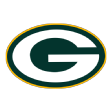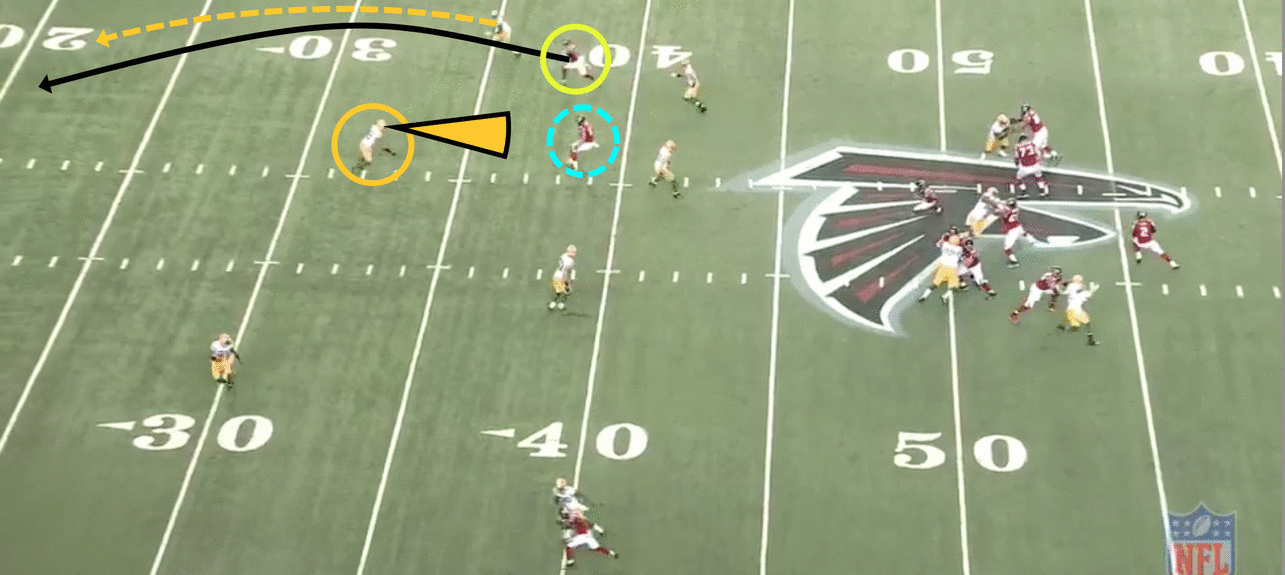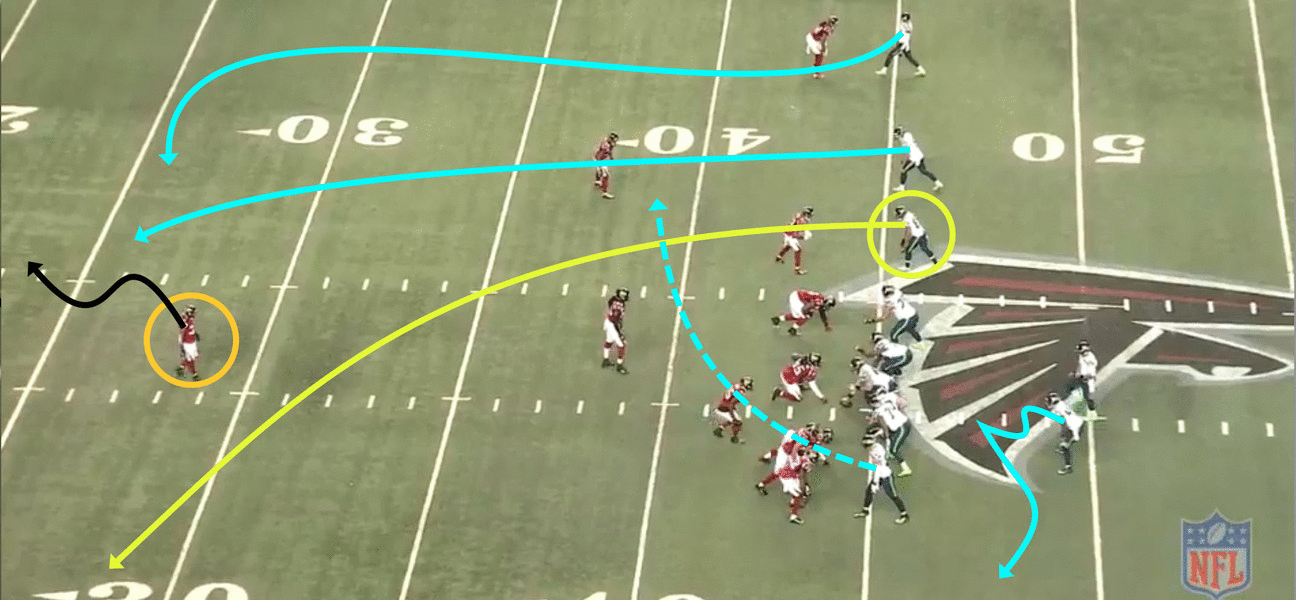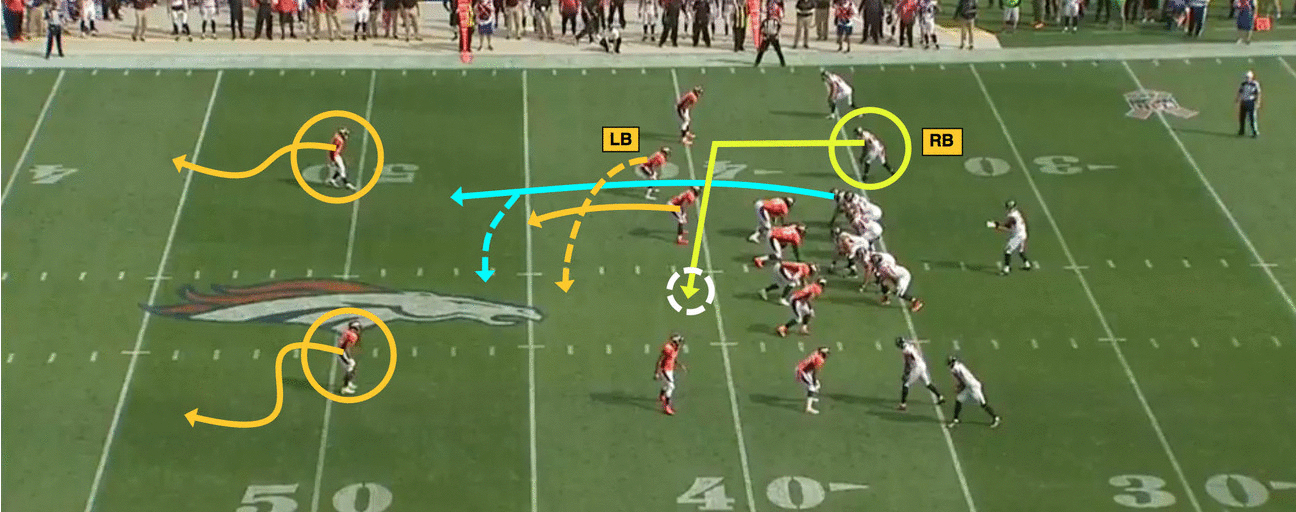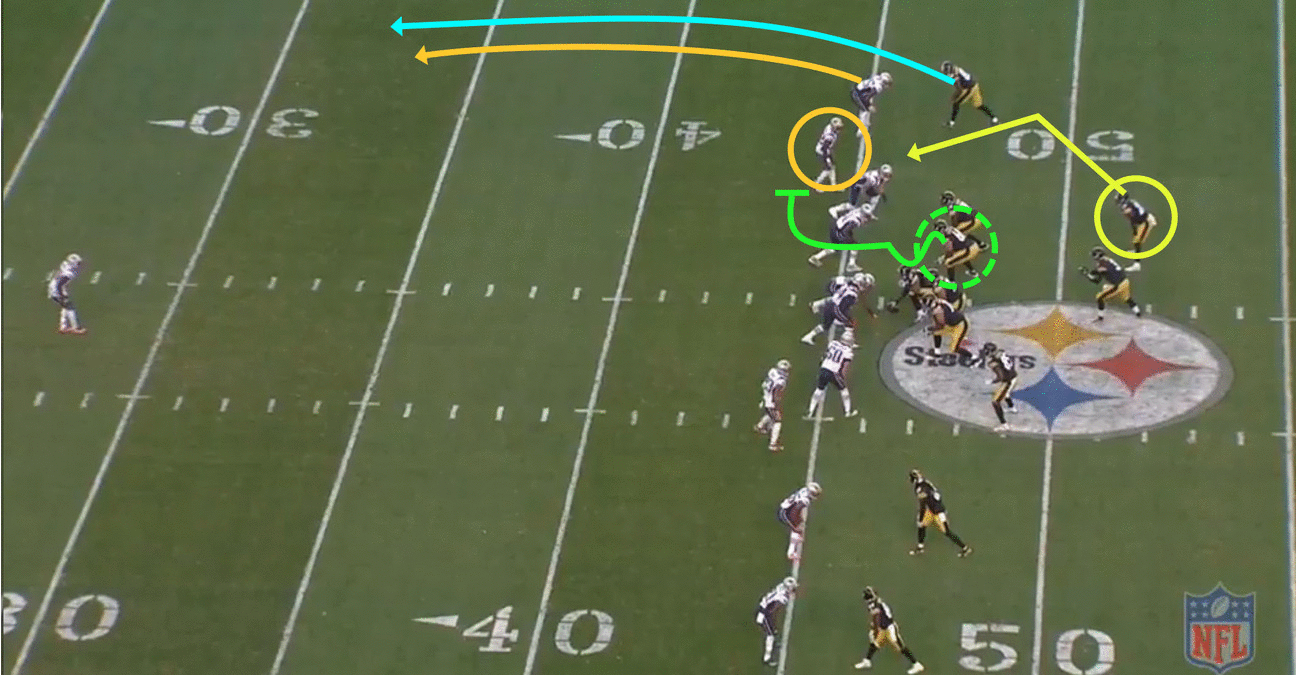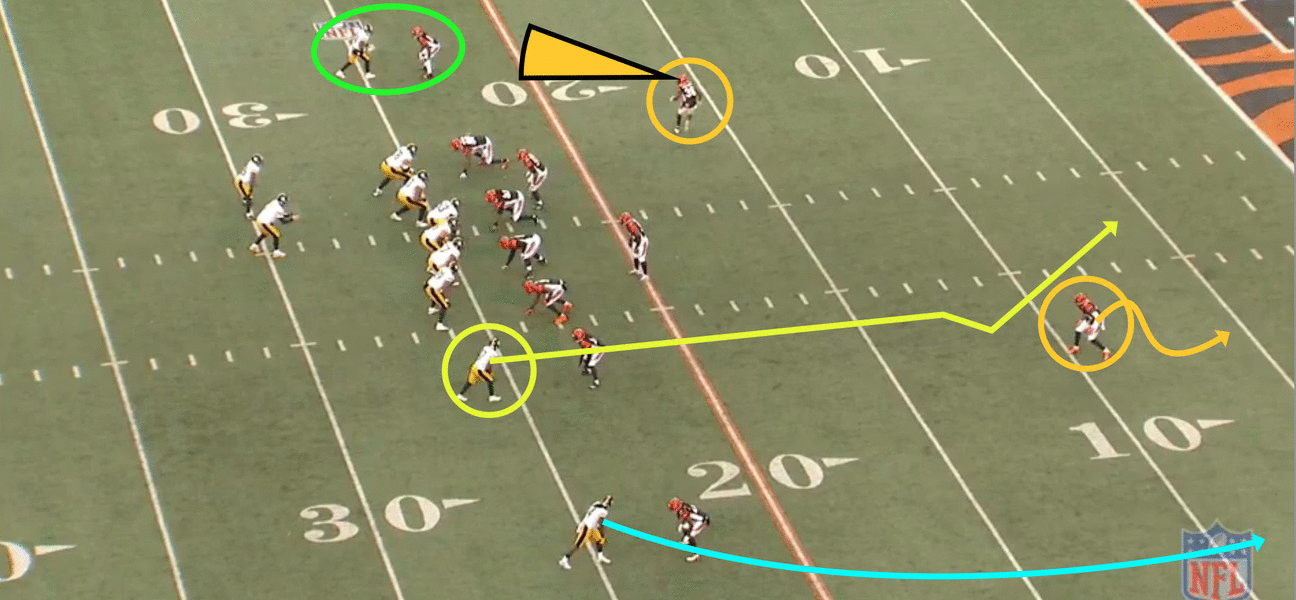http://www.espn.com/nfl/insider/sto...-2016-nfl-playoffs-afc-nfc-championship-games
Heading into Sunday's NFC and AFC conference championship games, the
Green Bay Packers (plus-4.5) and
Pittsburgh Steelers (plus-6) are listed as underdogs. So how do they pull off upsets on the road this weekend and move on to Super Bowl LI? Let's take the perspective of a coach and use some examples from the tape to break down three keys for both teams.
How the Packers can upset the Falcons
Play safe defense in the "shot zone"
Why it's important: When the Falcons move the ball into the "shot zone" (between the 40s), that antenna has to go up as a defensive back. This is when offensive coordinator Kyle Shanahan wants to try to rip off a big play.
Matt Ryan threw three touchdowns this season when his team had the ball between the 40s, tied for the second most in the NFL.
How do you do it: Given the layers of talent the Falcons have on the offensive side of the ball and the protection schemes off play-action that give Ryan time, I would take a much more cautious approach when Atlanta has the ball in the shot zone. This is when Shanahan likes to call
the Yankee route, Cross-Country Dagger (clear-out deep over route and a dig combo) and the Pin route (post-in).
In these situations, think of receiver
Julio Jones as the clear-out guy on the Yankee or the Cross-Country Dagger. He's going to pull the safety and the cornerback off the screen. And that opens up windows for Ryan to deliver the ball to
Mohamed Sanuor
Taylor Gabriel.
But don't forget about the Pin route, because that has been an issue for the Packers' secondary all season when it's playing Quarters. The Packers allowed touchdowns via the Pin route against the Redskins, the Giants in the playoffs and in their first meeting with the Falcons. These were deep balls over the top -- an easy six every time.
Here's a look back at the route from Week 8 with Ryan hitting Gabriel on the deep post after the safety takes the bait.
With the safety driving on the tight end, this leaves the cornerback,
Damarious Randall, one-on-one with Gabriel. There is no help with the safety now removed, and that puts a ton of stress on Randall to stay on top of the post. Yes, the cornerback can't expect help from the safety in Quarters technique, and he is taught to squeeze to the upfield shoulder. But with Gabriel widening Randall on the stem (creating room to separate back to the post), Ryan isn't going to miss on the deep shot. That's a touchdown all day.
Packers defensive coordinator Dom Capers has to adjust his game plan tendencies on Sunday. Get out of Quarters technique and play a two-deep shell. Limit the explosive plays when the field position tells you the deep ball is coming. If Ryan throws underneath, hits the inside windows or targets the dig route, then you live with it. Tackle and move on to the next play.
The key is to have your safeties playing "top-down" instead of taking the cheese underneath. You can't put your banged-up cornerback unit in a compromised position where it has to match up to Jones, Sanu or Gabriel with no immediate help. It's OK to be boring at times if it limits Ryan's ability to throw the ball over your head.
Target the Falcons' single-high defenses with trips formations
Why it's important: I fully expect
Aaron Rodgers to continue playing at a ridiculous level regardless of what kind of coverage the defense is playing. But when Atlanta uses a single-high safety (Cover 1, Cover 3), the Packers need to capitalize with some big plays to keep pace with the high-scoring Falcons.
How you do it: Let's start with the Seahawks-Falcons tape from last week's divisional-round playoff game.
Russell Wilson gave the Packers a blueprint by hitting both
Doug Baldwin and
Paul Richardson on deep crossing routes out of trips looks.
Check out Wilson's pass to Baldwin -- a Cover 1 beater from a 3-by-1 "Dakota" formation (tight end aligned as the backside X receiver).
With the Falcons playing Cover 1 (man-free), the Seahawks send tight end
Jimmy Graham on a shallow crossing route. That pulls the backside defender into man coverage and opens up the outside third on the field. Plus, with the inside verticals (frontside post and dig) "holding" the free safety in the middle of the field, there is no help for the cornerback,
Robert Alford, matching up to Baldwin. What does this turn into? A race across the field with Alford playing from an outside leverage position. That's a win for Wilson, Baldwin and the Seahawks.
Can the Packers do this? Of course. Green Bay likes to isolate a tight end on the back side of a 3-by-1 (either attached to the formation or split out wide). That gives Rodgers three wide receivers to the front side of the formation. Whether that is
Randall Cobb working back across the field or
Davante Adams (if he's healthy), I like the matchup for Green Bay against Falcons cornerbacks
Jalen Collins and Alford.
Now, when the Falcons play Cover 3 (three-deep, four-under), the Packers can remove the cornerback to the tight end side by releasing Cook up the field. That vacates the outside third and opens up a sweet window for Rodgers to hit Cobb or Adams on the deep crossers.
Along with the natural three-deep beaters, we are sure to see from the Packers' offense on Sunday (four verticals, sail, etc.), using trips formations allows coach Mike McCarthy to dial up plays that should produce positive gains. And in a game where the Packers will need to rack up points, creating open windows to win matchups is free money.
Be ready for when RBs Tevin Coleman and Devonta Freeman split out wide
Why it's important: Packers inside linebackers
Jake Ryan and
Blake Martinez will struggle to match up to the Falcons' running backs in the passing game. That can create issues for the Packers if Shanahan uses motion to get Coleman and Freeman aligned as receivers removed from the formation. The Falcons' RB duo combined for 883 yards
receiving this season, which would have ranked No. 1 among running backs this season.
How you do it: I always go back to the Falcons-Broncos tape from Week 6 in the regular season because of the game plan from Shanahan. He found the weakness in one of the NFL's best defenses by using Coleman and Freeman to expose matchups against the Denver linebackers.
Take a look at this example with Coleman shifting out of the backfield to a slot alignment to run the smash route.
With the Broncos in their nickel personnel and playing 2-Man coverage (two-deep, man-under), the linebackers have to "bump" with the shift from Coleman. That allows the Falcons to run a Hi-Lo concept with the tight end releasing up the field and Coleman coming underneath. This is nothing more than a pick route with the tight end creating traffic and forcing the linebacker to bubble over the top. And look at the space it creates for Coleman to come underneath. This is a high-percentage throw from Ryan with the safeties gaining depth in the deep halves. Catch and run. Coleman turns this into an explosive play off a 5-yard pass because of the route combination and the matchup.
From the perspective of the Packers, they should lean on their nickel and dime packages and rely on defensive back
Micah Hyde to handle any running back shifting out of the backfield. That puts the Packers in a position where they can use basic rules for the running backs in coverage and also get a defensive back in the matchup to play the skill sets of Coleman and Freeman.
I don't like having linebackers adjust to motions or shifts because they aren't used to playing at different levels, avoiding picks or taking the proper angles to close to the upfield shoulder in coverage. Plus, when you do play zone coverage, Hyde is an upgrade in space.
Whether we are talking base or sub-package, the idea of using defensive backs in coverage protects Green Bay and takes away a key matchup piece for Shanahan with his running backs aligning as receivers.
How the Steelers can upset the Patriots
Create matchups and open space for Le'Veon Bell as a receiver
Why it's important: Bell should see at least 20 carries in the run game against the Patriots, but his skill set as a receiver could be vital to the Steelers creating matchups against Bill Belichick's defense on Sunday. Bell averaged 6.25 catches per game in the regular season, tops among all running backs.
How you do it: We know the screen game is big with Bell. The same with throws to the flat, the checkdown against zone coverage and the one-on-ones when Bell shifts to the slot or outside the numbers. That's going to force the Patriots to match up with a linebacker or roll down safeties
Devin McCourty or
Patrick Chung. I would take Bell in those matchups. He has the ability and lateral quickness at the top of the route stem to separate.
He can run an option route, a pivot route or release up the seam. But the Steelers should also think outside of the box with Bell as they did in the regular-season matchup against the Patriots when
Landry Jones stepped in at quarterback for the injured Roethlisberger. This is a pretty cool play:
With the Patriots using McCourty to roll down in coverage versus Bell, the Steelers countered with an angle/screen concept. Bell releases outside, which forces McCourty to widen with the initial stem. However, instead of running a basic angle route in which Bell breaks back inside and McCourty closes to the throw, the Steelers release guard
David DeCastro to block the Patriots defensive back. This prevents McCourty from breaking on the route and creates a ton of space for Bell to get back up the field after the catch.
This is only one example, but it also shows the ability of Steelers offensive coordinator Todd Haley to add some wrinkles to the call sheet. And I believe Pittsburgh will need some more creativity to counter the defensive game plan of Belichick while generating opportunities for Bell.
Generate interior matchups against the Patriots' offensive line
Why it's important: When Brady isn't pressured and plays from a clean pocket, he completes 75.5 percent of his throws (second overall). That falls all the way to 39.2 percent (24th overall) when he's under duress. And more than anything, pressure up the middle has always thrown Brady off because it inhibits his ability to step up in the pocket and manipulate the coverage.
How you do it: I would go right to the Texans-Patriots tape and use defensive coordinator Romeo Crennel's game plan from Saturday night. Find a way to maximize personnel to win inside matchups while avoiding straight blitz situations. Brady lights defenses up when they blitz five or more defenders; his near perfect 92.2 Total QBR in such situations is nearly 10 points better than the next-best quarterback over the past three seasons.
But the Texans last week -- and the Broncos last year -- showed that teams don't have to blitz Brady to get pressure. Check out this creative scheme from Crennel:
As you can see here, Crennel aligns rush linebacker
Whitney Mercilus right over the center and bumps
Jadeveon Clowney inside. This allows the Texans to occupy both offensive guards while creating that inside one-on-one for Mercilus. On top of that, both outside linebackers drop as rovers with the Texans playing man coverage. The objective? Gain depth and get the eyes back on Brady (second-level help) while Mercilus wins the matchup and forces Brady to hit the eject button in the pocket. If you watch closely, this is really only a three-man rush, but it results in a sack because of Mercilus' closing speed and the creativity from Crennel.
Can the Steelers create a similar situation or alignment to get that inside pressure? I think they can when looking at
Bud Dupree,
Ryan Shazier and
James Harrison. Put your versatile and athletic linebackers in the middle to limit Brady's ability to step up, slide and maneuver within the pocket while playing a smart and safe coverage in the back end.
If the Steelers sit in Cover 2 or Cover 3 all day, Brady will throw for 300 yards. They must generate pressure like the Texans did and get hits on the quarterback. And Houston gave the Steelers some ideas thanks to Crennel's game plan.
Split the top of the secondary with Eli Rogers in the red zone
Why it's important: The Steelers didn't have much success inside the red zone last week against the Chiefs, scoring zero touchdowns in four tries. It's not going to get any easier against the Patriots, who ranked fourth in Total QBR allowed in the red zone.
How you do it: We have to believe that the Patriots and Belichick will plan to limit Antonio Brown in red zone situations. This is where New England can play more combination coverages or
use 2-Man technique over the top of Brown. Take away the offense's No. 1 target and force Roethlisberger to go somewhere else with the ball. Hey, I would have the same game plan.
However, that can open up some opportunities for Rogers. The Steelers' wide receiver has really impressed me on tape because of his quick feet and sudden burst to the ball. That allows him to expose inside matchups and beat split safety looks in scoring range.
Here's an example of that from the Steelers-Bengals matchup from the regular season.
The Bengals are playing 2-Man to put a safety over the top of Brown (top of the screen) with the Steelers in a 3x1 alignment and Rogers in the slot to the front side of the formation. With Pittsburgh using an outside vertical to widen the front-side safety (bottom of the screen), the middle of the field is now open. This is where Rogers can use his route-running ability to set up the defensive back in coverage. This is called a shake route as Rogers stems up the field, sells the out cut and then carries the seam back to the hash. Separate and split the top of the secondary with both safeties occupied. Clear target for Roethlisberger to deliver the ball for a score.
I'm very interested to see how Belichick prepares for Brown. The Patriots have to limit his ability to stretch the field and produce after the catch on three-step concepts. But while the focus will be on rolling coverage to Brown, this is a game where Rogers can play a major role.
You want to beat Brady and the Patriots in Foxborough, Massachusetts? You have to score touchdowns. Field goals aren't going to cut it.


